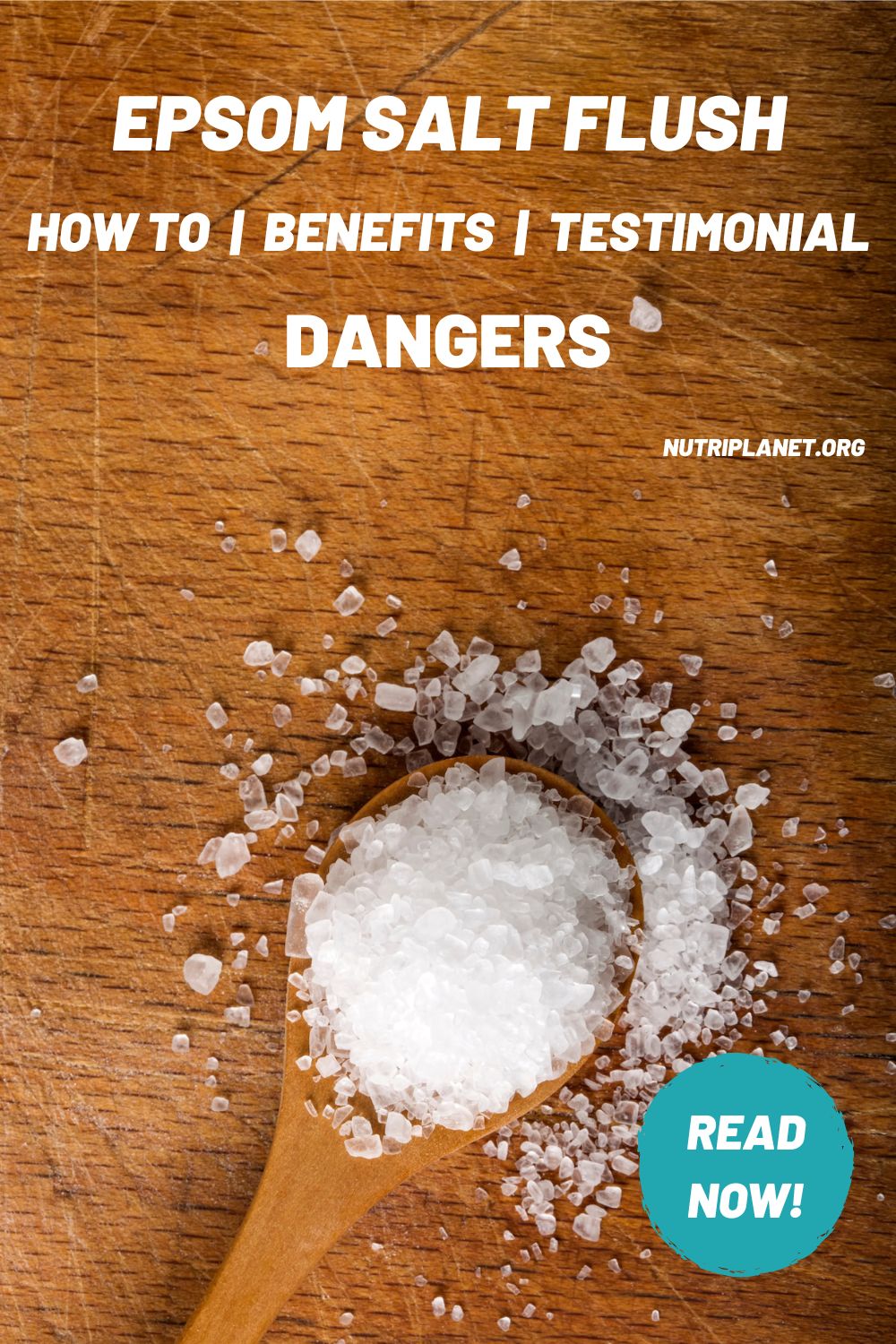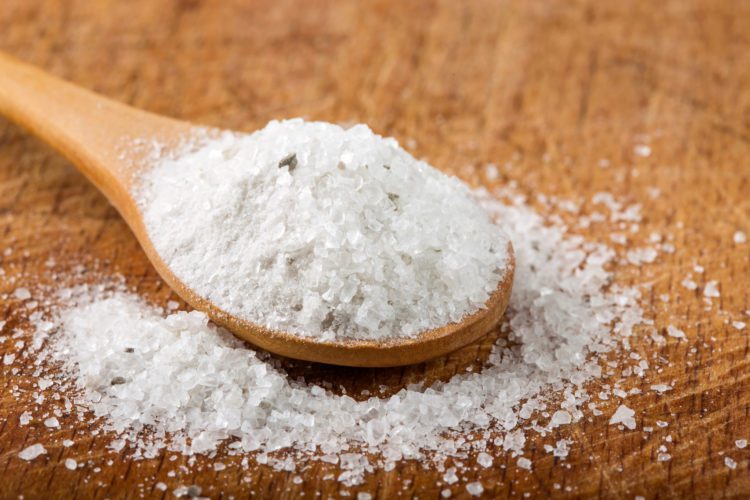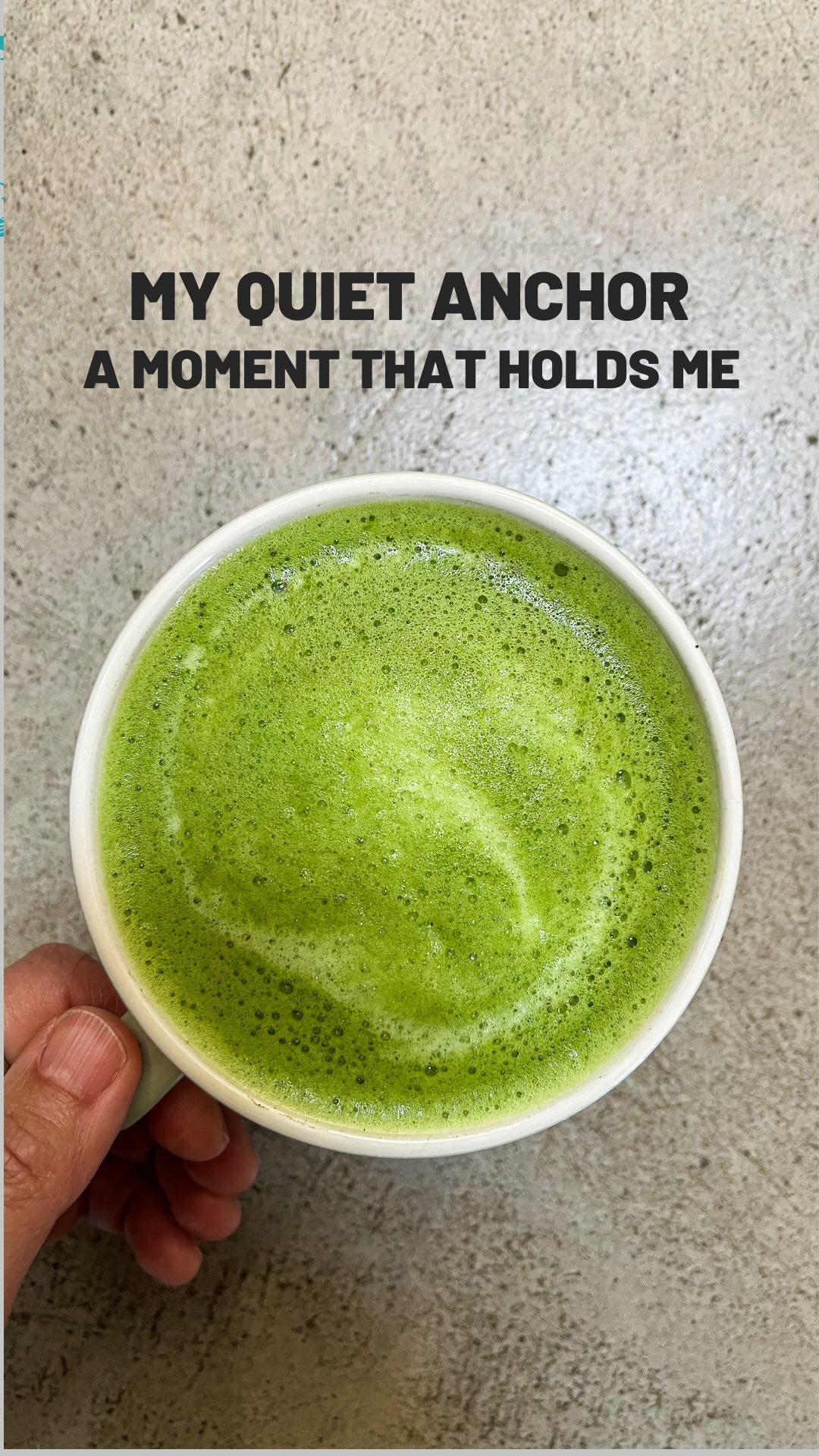Learn about what Epsom salt is and how to do an Epsom salt flush. Furthermore, what are the benefits as well as dangers associated with Epsom salt as a laxative.
Table of contents
What is Epsom Salt?
Epsom salt is also known as magnesium sulphate. It’s a chemical compound made up of magnesium, sulphur, and oxygen.
An important side note – it’s not Epsom salt that hospitals use before colonoscopy. Instead, they make you consume pico sulphate with magnesium citrate. [1]
Epsom salt got its name from the town of Epsom in Surrey, England, where it was originally discovered.
For hundreds of years, this salt has been used to treat ailments, such as constipation, insomnia, and fibromyalgia. Unfortunately, its effects on these conditions are not well researched.
While it looks like table salt, its taste is distinctly different. Epsom salt is quite bitter and unpalatable for most people.
Most of the reported benefits of Epsom salt are attributed to its magnesium, a mineral that a lot of people do not get enough of. It looks like table salt and is often dissolved in baths, which is why you may also know it as “bath salt.” However, today I’m looking into drinking it for laxative effect.

Download the FREE pdf version!
Fasting 101: The Complete Guide to Fasting Do’s and Don’ts
Besides an effective summary of the current article, you’ll also get:
- The list of fruit and vegetable juices for specific organs and conditions.
- Autumn rejuvenation soup recipe.
Epsom Salt and Magnesium as Laxative
Magnesium is often used to treat constipation. It appears to be helpful because it draws water into your colon, which promotes bowel movements. [2]
Most often, magnesium is taken by mouth for constipation relief in the form of magnesium citrate or magnesium hydroxide.
Magnesium oxide is safe to use on a regular basis in mildly constipated people. Standard doses of 40 to 80 mmol of magnesium ion usually provokes a bowel movement within 6 hours.
Epsom salt aka Magnesium sulphate is a more potent laxative that tends to produce a large volume of liquid stool and abdominal distention.
Magnesium citrate is also a powerful natural laxative. It has been shown to be more bioavailable and better absorbed in the body than other forms of magnesium, such as magnesium oxide. [3]
Magnesium citrate increases the amount of water in the intestinal tract, which causes a bowel movement. [4]
When combined with other types of laxatives, magnesium citrate has been shown to be as effective as traditional colon-cleansing regimens used before medical procedures. [5]
How to Do an Epsom Salt Flush
Here’s a brief overview of how to do an Epsom salt flush:
- Take food-grade Epsom salt and dissolve it in water.
The amount of salt can vary from 2-6 teaspoons, water should be at least 8 ounces (237 ml).
- Drink the Epsom salt solution.
You should drink the solution on an empty stomach.
- Wait for 30 minutes to 6 hours.
It can take anything from 30 minutes to 6 hours or even longer for it to take effect.
- Consume plenty of liquids.
Make sure you consume plenty of liquids (water, herbal teas) throughout the day.
Adults are usually advised to take 2–6 teaspoons (10–30 grams) of Epsom salt at a time, dissolved in at least 8 ounces (237 ml) of water and consumed immediately. You can expect a laxative effect in 30 minutes to 6 hours.
If it’s your first time trying Epsom salt flush, start slowly. For example, try consuming 1–2 teaspoons (5–10 grams) at a time and gradually increase the dose as needed. However, don’t ingest Epsom salt for more than two days in a row.
You need to bear in mind that everyone’s magnesium needs are different. Therefore, you may need more or less than the recommended dose, depending on how your body reacts and what exactly you are using it for.
In case you do need an individualised dosage i.e., more than the recommended maximum, consult your doctor and get his consent before ingesting any amount of Epsom salt increasing the recommended upper limit. It’s because it can lead to magnesium sulphate poisoning.
Approximately 1–2 teaspoons (5–10 grams) is generally enough for children. However, I encourage you to consult with a medical professional before administering Epsom salt to children.
Additionally, when consuming Epsom salt, make sure to use pure, food-grade Epsom salt that does not have any added scents or colouring. Many brands meant for taking Epsom salt baths may have these additives.
Common side-effects include diarrhoea, bloating, or upset stomach.
Make sure to consume plenty of liquids to make up for the loss through diarrhoea. Furthermore, never take more than the recommended dosage without first consulting your doctor.
It’s important to note that Epsom salt flush should only be used occasionally as a laxative, not for long-term relief.
Dangers of Epsom Salt Flush
Some cases of magnesium overdose have been reported, in which people took too much Epsom salt. Symptoms include nausea, headache, light-headedness, and flushed skin.
There was a case of fatal hypermagnesemia in a 53-year-old woman who was admitted for acute exacerbation of chronic obstructive pulmonary disease and with a history of chronic constipation treated regularly with magnesium-containing laxatives.
Although rare and often unsuspected, severe hypermagnesemia frequently results in death even in individuals with normal kidney function. In patients with constipation, retention of magnesium-based laxative in the gut apparently serves as a reservoir for continuous magnesium absorption and contributes to mortality. [6]
A 56-year-old man presented to the emergency room reporting weakness after an ingestion of Epsom salts used as a laxative. He subsequently developed altered mental status and respiratory depression and needed intubation. His magnesium level was > 9.5 mg/dL (normal is 1.6-2.5 mg/dL). He was given multiple doses of calcium gluconate and generous i.v. fluids with furosemide, with minimal improvement. However, his magnesium level corrected rapidly after initiation of dialysis, and 3 days later he was discharged home in good condition with normal neurologic function.
Hypermagnesemia
Hypermagnesemia is an often overlooked electrolyte abnormality that has a myriad of presenting symptoms. It has been observed after both accidental and intentional ingestions of magnesium-containing compounds, and as in the cases mentioned, Epsom salts, which are primarily magnesium sulphate.
In 75% of these cases hypermagnesemia was clinically unsuspected, and the total amount of magnesium ingested was not excessive, but bowel disorders may have enhanced the absorption.
Other causes for hypermagnesemia:
- Lithium therapy.
- Common in patients with end stage kidney disease, in those undergoing dialysis and in acute kidney failure.
- Also seen in patients undergoing continuous ambulatory peripheral dialysis (CAPD).
- Mild hypermagnesemia has also been seen in hypothyroidism, Addison’s disease and milk alkali syndrome.
Symptoms of hypermagnesemia:
- Neuromuscular: confusion, lethargy, respiratory depression, absent tendon reflexes, paralytic ileus, bladder paralysis, muscle weakness/paralysis.
- Cardiovascular: hypotension, bradycardia (slow heart rate), inhibition of AV and interventricular conduction, heart block, cardiac arrest.
- Others: nausea, vomiting.
In addition, it is important to note that signs and symptoms of hypermagnesemia are not usually apparent until serum magnesium is in excess of 2 mmol/L (4.86 mg/dL). However, the serum concentration at which signs and symptoms appear varies widely. [7]
Also, older adults should be extra cautious because of the high profile of gastrointestinal side effects and magnesium toxicity.
Other side effects include hypermagnesemia-induced paralytic ileus and hypermagnesemia in patients with renal failure. Paralytic ileus occurs when the muscle contractions that move food through your intestines are temporarily paralyzed.
Also, magnesium containing laxatives are not recommended in people with renal insufficiency or cardiac dysfunction. It’s because of the high risk of developing electrolyte disturbances and volume overload from the absorption of magnesium or phosphorus. Even patients who are otherwise healthy may develop these complications as a result of excessive use. [8]

Download my FREE Guide to Plant-Based Diet
Including a full day’s meal plan!
Learn the basics, prepare your kitchen and pantry, compile a balanced meal plan, handle challenges with family and friends, learn the tricks of dining out as well as travelling.
Learn the secrets of weight loss, better health and happiness!
My Experience with Epsom Salt Flush
I tried out Epsom salt flush myself. In the below video I share why I decided to do it, which dosage I used, what was the elimination time-frame and whether I’d do it again. By the way, I’m going to be brutally honest sharing parts that I have not seen being mentioned in most testimonials.
Watch my brutally honest personal experience with Epsom salt flush in the below video:
Conclusion
Epsom salt flush seems to be an effective temporary measure for relieving constipation. However, one should be aware of the side-effects, dosage as well as dangers and consult a doctor beforehand.
It’s always best to try more natural laxatives, laxative foods and overall healthier elimination supporting diet and lifestyle before opting for Epsom salt flush.
Read my article on Natural Laxatives and Laxative Foods.
Disclosure: this post contains affiliate links. As an Amazon Associate I earn from qualifying purchases. For every purchase made from the links in this post, you’ll be able to support my work. So you can look after your health, and contribute to my mission at the same time. Thank you!






































